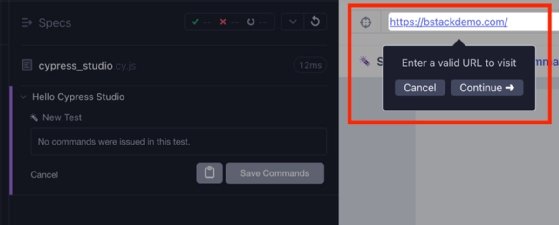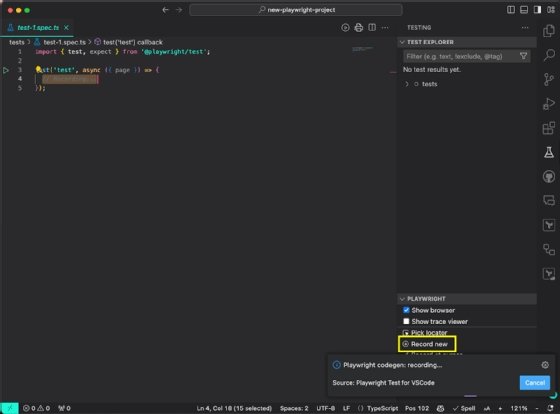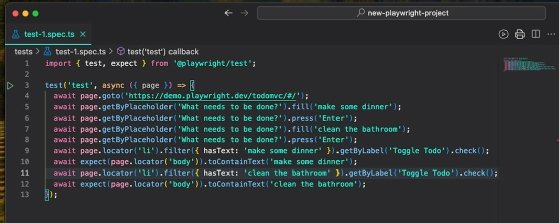Cypress vs. Playwright: When to use each (original) (raw)
A tool that meets application and development needs is an important aspect of a strong automated test development strategy.
Automated testing maintenance can turn into a beast when teams plan test automation. Although many tools provide AI and machine learning self-healing technology to help with test maintenance, performing failure analysis and fixing scripts can quickly become overwhelming. Still, automation provides distinct benefits when used to supplement and support a variety of testing types. Overall, automated testing can help QA testing teams extend test coverage for increased testing efficiency and application quality.
Enter leading test automation tools Cypress and Playwright. This guide describes the features of both Cypress and Playwright, key differences and tips for selecting the one that best fits the needs of the testing and development teams.
What is Cypress?
Cypress was created by Brian Mann and launched commercially in October 2018. Today, Cypress App and Cypress Cloud work together to deliver a complete automated testing product.
Cypress uses a Node.js server to retain a constant and synchronized connection. The Node.js server interacts through a WebSocket that is initiated when a proxy is created. All Cypress commands execute within the browser, so there's no need to synchronize driver binaries. Using the browser also streamlines the testing process and keeps it focused on the front end.
What is Playwright?
Playwright is a Microsoft product originally made available in 2011 that has steadily grown in popularity. Playwright is effective in creating end-to-end test automation for web applications in a variety of browsers. Playwright continues to improve and attract a growing number of supporters.
Playwright is a Node.js library with a single API that enables test automation in Chromium, Firefox and WebKit. The Playwright API is used within JavaScript to perform front-end functions, like navigating to different webpages through links and interacting with page elements.
Cypress vs. Playwright: Key differences
The key differences between Cypress and Playwright make them each distinctly useful for certain purposes. For example, Cypress is known for its usability, ease of installation and ability to make a test automation project productive in less time. Cypress is usable for QA testers, as well as for quick developer unit testing.
Playwright is more suitable for developers testing cloud deployments, mobile apps via emulation and WebSocket performance. Playwright works with more programming languages than Cypress, giving it a wider range of technical aptitude and capability for greater test coverage.
Testers should compare the most important features from each tool to understand what role each of them plays.
| Feature | Cypress | Playwright |
|---|---|---|
| Code language support | JavaScript, TypeScript | JavaScript, TypeScript, Python, .NET, Java |
| Overall usability | Easy to use for developers and QA testers | Learning curve is high, users need to have technical skills for APIs |
| Debugging quality | Provides readable errors and stack traces for easier issue identification | Provides additional flexibility for debugging with a variety of code languages |
| Test development | Unique built-in wait mechanism that automatically waits for slow application processes to complete without having to enter explicit statements | Adding in wait or sleep statements can get tedious, but entering them directly might provide more control over placement |
| Behavioral, functional and end-to-end test coverage | Validates the behavior of functions, timers and server functions for more complex unit test scenarios | Enables users to create end-to-end, behavioral and functional tests using JavaScript, TypeScript, C# or Java |
| Cross-browser support | Supports Firefox and Chrome-family browsers, including Edge and Electron | Runs tests on more browsers, including Chromium, WebKit and Firefox, along with branded browsers Google Chrome and Microsoft Edge; offers mobile app emulator access |
In addition to the general features, it helps to compare simple processes in each tool. Recording a test is one simple process that testers can run in each tool to compare them side by side.
Cypress
To record a test in Cypress, first enable the Cypress Studio option by adding the experimentalStudio attribute to the configuration file, using the following code:
e2e: {
experimentalStudio: true,
}
}
Next, go to the Spec Runner screen, hover on Test Suite Name and then select the Add New Test button. Click Get Started, and then enter the test URL, as shown in Figure 1.

Figure 1. Adding a new test in Cypress
Click Continue. Cypress Studio starts recording the actions the user takes on the URL. Now, set up a functional test on the application URL, and click on Save Commands in the left panel. Click the Continue button to see the new test added in Test Runner. Execute the test using Test Runner. Optionally, users can edit the test by selecting the Add Commands to Test icon, which opens Cypress Studio to edit the test code.
Playwright
Open Test Explorer. Then, select the Record new button on the sidebar. This creates a new test and opens a browser window, as shown in Figure 2.

Figure 2. Recording a new test in Playwright
Next, go to the URL address that needs to be tested, and test a scenario. Playwright records the user's actions and generates test code, as shown in Figure 3. After recording the test scenario, click the Cancel button, or close the browser window. Locate the test file, and add or edit the code as desired.

Figure 3. Playwright recording the user's actions and generating test code
Playwright provides documentation that shows users how to record from the cursor, add assertions and use the codegen command as well.
It's possible to use both Cypress and Playwright within the development team. QA testers are likely to prefer the ease of use and front-end features of Cypress. Developers, on the other hand, may prefer to use Playwright for API and unit testing.
It's possible to use both Cypress and Playwright within the development team. QA testers are likely to prefer the ease of use and front-end features of Cypress. Developers, on the other hand, may prefer to use Playwright for API and unit testing.
Pros and cons of Cypress
Cypress offers some distinct advantages to development and testing teams. Some of the advantages of Cypress are the following:
- Suitable for both behavioral and functional testing.
- Useful for unit testing.
- Includes a built-in wait or sleep feature.
- Single language support with JavaScript.
- Easier installation and simpler learning curve for faster results and ROI.
- Exceptional support community.
Still, the tool is not without its weak points. Some disadvantages of Cypress are the following:
- Unable to test with multiple browsers simultaneously.
- Fails to support multiple tabs that are typically popular in web applications.
- Restricted language support that hinders flexibility and the ability to enhance scripting.
Pros and cons of Playwright
Playwright offers several key advantages over Cypress. Some of the advantages of Playwright are the following:
- Capable of cross-browser support.
- Supports testing multiple page and domain scenarios.
- Can intercept network activity for stubbing and mocking needs.
- Enables testing of file uploads and downloads.
- Supports native input events for improved page element testing.
- Integrates with several CI/CD servers.
- Provides cloud deployment using Docker images for testing cloud infrastructure.
- Provides intelligent defaults that help make getting started scripting easier.
Playwright has its cons as well. Some of the disadvantages of Playwright are the following:
- More technically focused and harder to learn than most automation tools.
- Does not have extensive community support but is growing.
- Actively backed and driven by Microsoft but lacks the maturity of other test automation tools.
- Incomplete tooling so developers may have to create plugins and extensions for testing.
How to choose between Cypress and Playwright
While both tools can be used together, development teams might prefer to choose only one. Select the tool based on the features that make the most sense for the testers and developers responsible for test automation. The advantage of choosing just one tool is the team can back each other up and provide support with that tool.
Consider creating a pilot team to determine which tool best suits the team's needs. Have the pilot team download each tool, set it up and create test automation for a high-profile API or critical application function. Make sure the pilot team includes both QA testers and developers so the team can determine if the tool is usable by both groups. Have the pilot team ensure each tool integrates with the existing IT infrastructure and with other testing and development tools.
Once the pilot is complete, review the results with the entire development team. Get input and feedback on how each tool works. From there, take a vote, or determine which one best suits the majority of users' needs on the team, assuming it integrates with the IT infrastructure.
Also, consider having the pilot team provide or suggest tutorials and initial training options to help get started. Give users some time to train and experiment with the tools. Then, regroup and create a test automation strategy. When everyone is experienced in the selected tool, they are able to provide realistic feedback necessary for planning.
Choosing between Cypress and Playwright depends on the team's specific testing requirements and application. If teams don't need to test multiple browsers and want to get up and running faster, then Cypress might be appropriate. Playwright's API makes it more flexible. If teams need to test multiple browsers, it might be the best fit.
Both tools provide effective automated testing options. Remember, if the tool the team chooses doesn't work out, teams can switch tools. There are numerous automated testing tool options available to fit any development team's needs.
Amy Reichert is a 20-plus-year professional QA tester and a QA lead, specializing in test development, execution and management techniques. Her experience comes from a variety of sources, including ERP systems, architectural design, e-commerce and healthcare software.